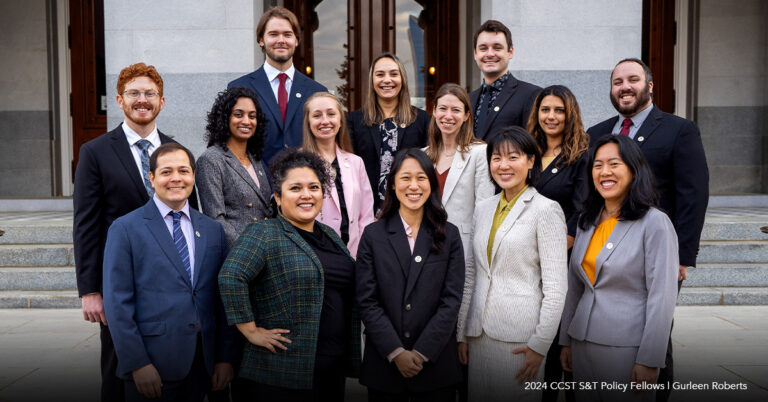Update: Applications for the CCST Science & Technology Policy Fellowship Have Closed
CCST Releases Updated Overview of Digitally Enhanced Education in California
May 17, 2012 | CCST Newsroom | Contact: M. Daniel DeCillis
 CCST has released a new overview on the status of digitally enhanced education in California in a two-volume report that covers the specifics of California’s digital education landscape and policies.
CCST has released a new overview on the status of digitally enhanced education in California in a two-volume report that covers the specifics of California’s digital education landscape and policies.
Digitally enhanced education is a broad term related to the use of technology in education, including everything from instructional materials (computers or other electronic devices in the classroom) to the use of online resources (digital libraries, virtual classrooms, etc.) In 2011, CCST published a white paper on digitally enhanced education in California in preparation for a summit convened by the California Teacher Advisory Council as part of CCST’s Innovate to Innovation, a multi-faceted project intended to assess key aspects of California’s innovation ‘ecosystem’; digitally enhanced education was identified as one of three primary areas where CCST would focus. The paper defined terms for digital education, provided an overview of why digitally enhanced education should be a priority for California, and outlined existing programs and policies pertaining to digital education.
The new documents provide updated information on digital education policy and practice. Volume 1 summarizes the potential advantages that digital education has to offer, which include an unprecedented ability to personalize learning experiences for each student, as well as potential cost savings. However there are challenges inherent in adopting technologies with the potential to alter the teaching environment so significantly. Empirical research about the impact of digital education on the academic achievement of K-12 students remains sparse. Further, California has numerous obstacles to taking advantage of resources such as online classes, due to policies that regionally restrict instruction and funding which is often unstable over the long term. There are examples of digital education success stories in California, such as the Rocketship Mateo Charter school, which devotes 25% of its class time to digitally enhanced education, and innovative new programs such as the Goorulearning.org online education search engine, in development. Overall, however, the state lags behind the average: one assessment of digital education nationwide ranked California last overall based on progress towards a digitally enhanced education system.
The second volume of the report details the education codes and regulations pertaining to digital education in California, of which there are many. In fact an August 2011 report by the California County Superintendents Educaitonal Services Association declared that California has created the “most complicated, confusing, and impenetrable set of policies” of any state. For instance, California state law does not draw formal distinctions among the categories of distance learning, online learning, and online instruction, providing overlaps in policies pertaining to execution and funding of digital education.
Policy issues aside, serious questions remain about implementing digitally enhanced education in the classroom. It is not enough to simply put a student in front of a computer, no matter how well designed the software. Competent supervision and administration of the content needs to be in place; if it isn’t, or of the software or online learning is not used appropriately, students may not benefit from it.
Despite the challenges, however, California cannot afford to simply let the 21st century seep into its classrooms in an ad hoc manner. In order to make effective use of its resources, and provide the best education possible for its students, the state needs to take an overall look at the digital education environments it is providing and make a concerted effort to develop a consistent approach.
“In the arena of virtual schools and online learning, a lack of consistent vision, combined with a complex educational code, have left the state uncharacteristically behind the curve,” notes Volume 1 of the report. “California needs to clarify its vision for digitally enhanced education, apply it consistently, and begin asking forward-thinking questions again.”






